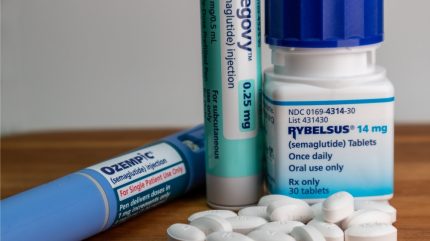Pre-diabetes rates increase amidst a renaissance for type 2 diabetes research
上市批准并购临床2期引进/卖出

Preview
来源: Pharmaceutical Technology
There are currently six GLP-1RAs available in the UK. Image credit: Shutterstock / KK Stock.
England’s National Health Service (NHS) has reported an 18% increase in the number of people with non-diabetic hyperglycaemia – also known as pre-diabetes.
The latest National Diabetes Audit shows that 3,615,330 people registered with a GP have pre-diabetes and are at a greater risk of developing type 2 diabetes (T2D). Compared to 2023 figures, this is up by more than half a million patients.
Now, the proliferation of glucagon-like peptide-1 receptor agonists (GLP-1RAs), in particular, has transformed diabetes care. These drugs work by mimicking the GLP-1 hormone that is normally released after eating, which stimulates various glycaemic control mechanisms.

Preview
来源: Pharmaceutical Technology
AbbVie signs agreement to acquire Landos Biopharma for $212.5m

Preview
来源: Pharmaceutical Technology
There are currently six GLP-1RAs available in the UK. The more popular options are Eli Lilly’s Mounjaro (tirzepatide) and Novo Nordisk’s Ozempic (semaglutide). Novo Nordisk also markets semaglutide in the oral form as Rybelsus. Other approved treatments include Eli Lilly’s Trulicity (dulaglutide), Novo Nordisk’s Victoza (liraglutide), and Sanofi’s Lyxumia (lixisenatide), all GLP-1RAs.
The sharp rise in uptake of GLP-1RAs has outpaced supply, however, leading to shortages in the NHS earlier this year. Off-label prescribing worsened the shortages, prompting guidance from a Medicines Safety Notice in March telling clinicians to only prescribe the drugs for their licensed indication.
At the same time, an increased supply of Rybelsus, and the introduction of Mounjaro in the supply chain have been highlighted by charity Diabetes UKDiabetes UK. The shortages are likely expected to last until the end of this year, according to Douglas Twenefour, head of care at Diabetes UKDiabetes UK.
Twenefour added: “We fully support the instruction that GLP-1 medications should not be prescribed off-label under any circumstances while there is an ongoing shortage impacting people with T2D.”
Global pharma scene
Novo Nordisk and Eli Lilly, market leaders for GLP-1RAs, are now the two biggest pharmaceutical companies in the world. Novo Nordisk has a market cap of $436bn while Eli Lilly’s market cap is $839.5bn.
Their success has meant other players in the industry have been making a push into diabetes – and more broadly weight loss – treatments. AstraZeneca received US Food and Drug Administration (FDA) approval earlier this week for its paediatric type 2 diabetes treatment Farxiga (dapagliflozin). Farxiga, marketed as Forxiga in the EU, is already approved as an adjunct to diet and exercise to improve glycaemic control in adults with T2D.
Pfizer is eying the lucrative metabolic disease market but suffered a setback after its weight loss pill, lotiglipron, caused serious side effects in a Phase IIb trial, causing the company to drop its GLP-1RAGLP-1RAGLP-1RAGLP-1RAGLP-1RAGLP-1RAGLP-1RAGLP-1RA candidate. Pfizer will rest its hopes on its other candidate, danuglipron, to take on competitors.
更多内容,请访问原始网站
文中所述内容并不反映新药情报库及其所属公司任何意见及观点,如有版权侵扰或错误之处,请及时联系我们,我们会在24小时内配合处理。
靶点
来和芽仔聊天吧
立即开始免费试用!
智慧芽新药情报库是智慧芽专为生命科学人士构建的基于AI的创新药情报平台,助您全方位提升您的研发与决策效率。
立即开始数据试用!
智慧芽新药库数据也通过智慧芽数据服务平台,以API或者数据包形式对外开放,助您更加充分利用智慧芽新药情报信息。




